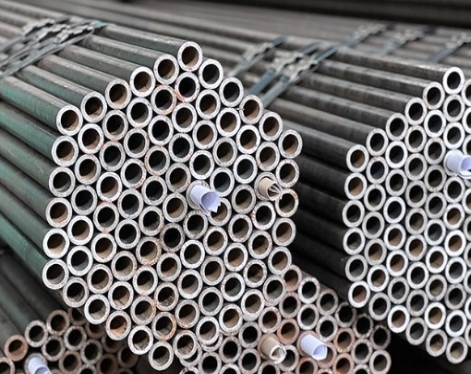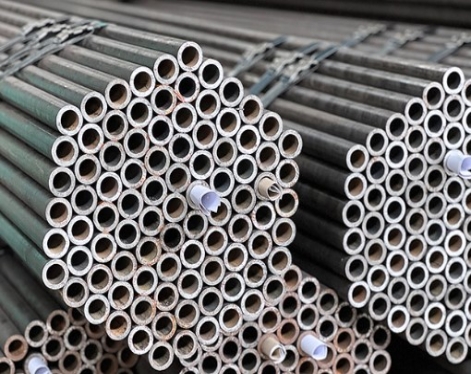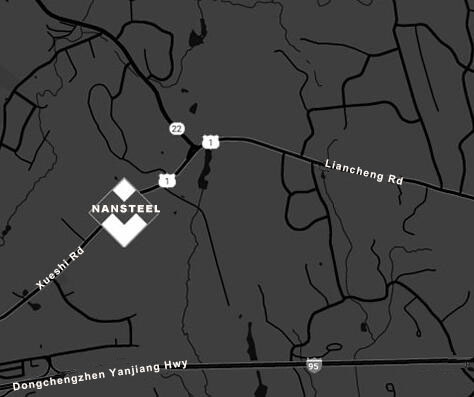As an important component of industrial equipment, boiler tubes are widely used in electric power, chemical industry, petroleum, metallurgy and other industries. With the aging of equipment or technological upgrading, a large number of boiler tubes are eliminated. How to effectively recycle and reuse these materials has become an important environmental and economic issue. The recycling of boiler tubes can not only reduce resource waste, but also reduce environmental pollution and create economic benefits. The following are the main methods of recycling boiler tubes:
1. Direct reuse
After boiler tubes reach the end of their service life, some pipes may still have good mechanical properties and corrosion resistance. After inspection and repair, these pipes can be reused in other industrial equipment or in low-pressure, low-temperature environments. For example, boiler tubes can be used in building structures, agricultural irrigation systems or temporary pipeline laying, etc. Direct reuse is the simplest and most economical recycling method, but its scope of application is limited and usually requires strict testing and uation.
2. Material recycling
Boiler tubes are mainly made of metal materials such as carbon steel, alloy steel or stainless steel, which have high recycling value. Through smelting, rolling and other processes, scrap boiler tubes can be reprocessed into new metal materials. The specific steps are as follows:
Disassembly and classification: Disassemble the boiler tubes from the equipment and classify them according to material.
Cleaning and descaling: Remove dirt, rust and coating from the pipe surface.
Cutting and crushing: Cutting the pipe into small pieces or crushing it into metal fragments.
Smelting and purification: The metal fragments are sent to the furnace to be melted, impurities are removed, and then recast into steel ingots or other metal products.
Material recycling is one of the main ways to recycle boiler tubes, which can achieve the recycling of resources and reduce dependence on raw materials.
3. Processing into other products
Waste boiler tubes can be processed and transformed into products with other uses. For example:
Construction materials: Boiler tubes are cut into short tubes for use in building scaffolding, guardrails, support structures, etc.
Agricultural equipment: Processing pipes into irrigation pipes, greenhouse supports, etc.
Furniture manufacturing: The strength and corrosion resistance of boiler tubes are used to make industrial-style furniture such as tables, chairs, and bookshelves.
Artworks and decorations: Through creative design, boiler tubes can be transformed into sculptures, lamps and other works of art.
This approach not only extends the service life of the material, but also increases its added value.

5. Environmentally friendly treatment
For boiler tubes containing harmful substances (such as heavy metals, coating residues, etc.), environmental protection treatment measures must be taken to avoid secondary pollution to the environment. Specific methods include:
Chemical treatment: Use chemical reagents to remove harmful substances from the surface of the pipe.
Solidification treatment: Hazardous substances are mixed with a solidifying agent to stabilize them for safe landfill.
Harmless landfill: The pipes that cannot be handled are harmlessly treated and sent to a special landfill.
6. Technological innovation and R&D
With the advancement of science and technology, the technology of boiler tube recycling is also developing. For example:
3D printing technology: Recycled metal materials are used for 3D printing to produce high-precision parts or products.
Nanotechnology: Use nanotechnology to modify recycled materials to improve their performance and application range.
Intelligent sorting technology: Improve the classification and sorting efficiency of boiler tubes through artificial intelligence and automated equipment.
These technological innovations provide more possibilities for the recycling of boiler tubes.
7. Policy support and market mechanisms
Governments and businesses can promote the recycling of boiler tubes by formulating policies and establishing market mechanisms. For example:
Subsidies and tax incentives: Subsidies or tax incentives are given to companies engaged in boiler tube recycling to encourage their development.
Recycling network construction: Establish a recycling network with extensive coverage to facilitate enterprises and individuals to send waste boiler tubes to recycling points.
Environmental certification and standards: Develop environmental standards and certification systems for boiler tube recycling to ensure that the recycling process meets environmental requirements.
Summary
Boiler tube recycling is a systematic project involving direct reuse, material recycling, processing and modification, energy recovery, and environmentally friendly treatment. Through technological innovation, policy support, and public participation, the recycling rate of boiler tubes can be effectively increased, achieving the dual goals of resource conservation and environmental protection. In the future, with technological advancements and growing environmental awareness, the efficiency and benefits of boiler tube recycling will be further enhanced, making a greater contribution to sustainable development.
Read more: Thermal Cycling Performance of Boiler Tubes
1. Direct reuse
After boiler tubes reach the end of their service life, some pipes may still have good mechanical properties and corrosion resistance. After inspection and repair, these pipes can be reused in other industrial equipment or in low-pressure, low-temperature environments. For example, boiler tubes can be used in building structures, agricultural irrigation systems or temporary pipeline laying, etc. Direct reuse is the simplest and most economical recycling method, but its scope of application is limited and usually requires strict testing and uation.
2. Material recycling
Boiler tubes are mainly made of metal materials such as carbon steel, alloy steel or stainless steel, which have high recycling value. Through smelting, rolling and other processes, scrap boiler tubes can be reprocessed into new metal materials. The specific steps are as follows:
Disassembly and classification: Disassemble the boiler tubes from the equipment and classify them according to material.
Cleaning and descaling: Remove dirt, rust and coating from the pipe surface.
Cutting and crushing: Cutting the pipe into small pieces or crushing it into metal fragments.
Smelting and purification: The metal fragments are sent to the furnace to be melted, impurities are removed, and then recast into steel ingots or other metal products.
Material recycling is one of the main ways to recycle boiler tubes, which can achieve the recycling of resources and reduce dependence on raw materials.
3. Processing into other products
Waste boiler tubes can be processed and transformed into products with other uses. For example:
Construction materials: Boiler tubes are cut into short tubes for use in building scaffolding, guardrails, support structures, etc.
Agricultural equipment: Processing pipes into irrigation pipes, greenhouse supports, etc.
Furniture manufacturing: The strength and corrosion resistance of boiler tubes are used to make industrial-style furniture such as tables, chairs, and bookshelves.
Artworks and decorations: Through creative design, boiler tubes can be transformed into sculptures, lamps and other works of art.
This approach not only extends the service life of the material, but also increases its added value.

4. Energy recovery
During the boiler tube recycling process, some pipes that cannot be reused can be processed through energy recovery. For example, the pipeline is fed into a high-temperature incinerator as fuel, and the heat generated by its combustion is used to generate electricity or heat. This method is suitable for pipelines where material regeneration is not possible, but attention should be paid to the pollutant emissions that may be generated during the combustion process.5. Environmentally friendly treatment
For boiler tubes containing harmful substances (such as heavy metals, coating residues, etc.), environmental protection treatment measures must be taken to avoid secondary pollution to the environment. Specific methods include:
Chemical treatment: Use chemical reagents to remove harmful substances from the surface of the pipe.
Solidification treatment: Hazardous substances are mixed with a solidifying agent to stabilize them for safe landfill.
Harmless landfill: The pipes that cannot be handled are harmlessly treated and sent to a special landfill.
6. Technological innovation and R&D
With the advancement of science and technology, the technology of boiler tube recycling is also developing. For example:
3D printing technology: Recycled metal materials are used for 3D printing to produce high-precision parts or products.
Nanotechnology: Use nanotechnology to modify recycled materials to improve their performance and application range.
Intelligent sorting technology: Improve the classification and sorting efficiency of boiler tubes through artificial intelligence and automated equipment.
These technological innovations provide more possibilities for the recycling of boiler tubes.
7. Policy support and market mechanisms
Governments and businesses can promote the recycling of boiler tubes by formulating policies and establishing market mechanisms. For example:
Subsidies and tax incentives: Subsidies or tax incentives are given to companies engaged in boiler tube recycling to encourage their development.
Recycling network construction: Establish a recycling network with extensive coverage to facilitate enterprises and individuals to send waste boiler tubes to recycling points.
Environmental certification and standards: Develop environmental standards and certification systems for boiler tube recycling to ensure that the recycling process meets environmental requirements.
8. Public education and publicity
Raising public awareness and participation in boiler tube recycling is also an important part of promoting the development of this sector. Through publicity and education activities, more people can understand the significance and methods of boiler tube recycling and encourage active participation from all sectors of society.Summary
Boiler tube recycling is a systematic project involving direct reuse, material recycling, processing and modification, energy recovery, and environmentally friendly treatment. Through technological innovation, policy support, and public participation, the recycling rate of boiler tubes can be effectively increased, achieving the dual goals of resource conservation and environmental protection. In the future, with technological advancements and growing environmental awareness, the efficiency and benefits of boiler tube recycling will be further enhanced, making a greater contribution to sustainable development.
Read more: Thermal Cycling Performance of Boiler Tubes









